nindota ana roy oi

Results 361 to 370 of 751
-
07-28-2008, 12:23 PM #361
-
07-28-2008, 12:34 PM #362
Aww thank you grandmaster hehehehe unya unsa sabot nu ni Mike gnha?
Bettas For Beginners
WELCOME TO BETTAS! You are most definitely in for a real treat. Bettas are unique in our aquarium hobby for being available in all the colors of the rainbow with color/patterns limited only to a hobbyist's imagination. In addition, the betta is an intelligent and interactive little pet with the unique ability to live happily in containers which would be limiting to other fish species. A betta can be quite successfully kept in glass or plastic jars, tumblers, bottles, candy dishes, and practically anything that holds water. As long as his water quality and dietary needs are met he can live to delight you, his owner, for several years.
1.) Buying from a breeder. This is often your best bet, and if you live within driving distance of a decent breeder I would highly recommend it. Breeders usually know what genetics their bettas carry, which can prove very useful if you ever decide to spawn your bettas. They also offer young, healthy fish which haven't been exposed to pet shop diseases, as well as many colors and varieties you would never hope to find in a pet store. I know of many breeders who are happy to give tours of their fishrooms to visitors, and this enables you to actually see the fish in person before buying. Look for young, vibrant, healthy fish, and use your own good judgement. If the breeder does not seem to keep his or her bettas in decent living conditions, you might want to shop elsewhere.
2.) Buying online. This is the best way of getting the highest quality purebred bettas if you are interested in breeding top bettas and possibly even showing them someday. In this day and age of widespread internet use purchasing bettas online is easier than ever. Unfortunately, that also means that there are some sellers out there with shady reputations and business ethics. Look around and ask questions...only purchase from sellers who are willing to answer your questions in a prompt and courteous manner, and who seem educated about their fish. Ask the seller how long he or she has been involved in bettas. You'd be surprised at how many people are selling fish these days who have only been in the betta hobby for a relatively short time -- some of them under a year or two! I'd recommend looking for a seller who has been in the hobby awhile and has sufficient experience in both breeding and selling bettas.
Basic Colors of Bettas
Bettas come in a wide array of colors. They can be jewel-bright to soft pastel and even pure white or completely colorless. The colors available can be combined or crossed to make even more colors. For this reason they are one of the most popular hobby fish of all time.
Here are the colors recognized by the International Betta Congress:
RED: The color red in bettas is a layer of color that is just above the black layer. In wild bettas the distribution of red is limited to the pelvic, anal, and caudal fins. In solid red bettas the normal red pigment has been increased in density and extended in distribution to cover the entire body and fins of the fish. This mutation is called 'Extended Red', and it is dominant over normal (wild type) red coloration.
The most brilliantly red bettas are those that possess both the extended red gene and the blonde gene. A betta without the blonde gene appears considerably darker, almost drab by comparison. Extended red bettas that also possess the blonde gene are cherry red, ideal for show purposes. Some extended reds appear lighter in color, with pale chins and minimal black scale. These are usually showing a cambodian genotype.
BLACK:There are currently four types of developed black betta in the hobby today, the MELANO BLACK, and MARBLE BLACK, the SUPER BLACK, and the DOUBLE BLACK.
Black Melano is probably the oldest and most popular form of black, and it produces a very dark black that is pleasing to the eye. The drawbacks to the black melano is 1.) the tendency toward iridescence on the body (a fault), and 2.) true melano females cannot produce living fry. You will sometimes hear this referred to as 'female infertility', but that is not definitively true. They spawn and release eggs as any female will, and the eggs are fertilized. But the shell membranes disintegrate before the embryos are able to survive independently. Nobody yet can confirm why this may be, but some think it is due to experimental radiation that was used to initially create the black betta. Melano bettas must be propogated using females of another color (usually steel blue) that carry the genotype for melano. These spawns will produce only 50% melano bettas, the others being multicolors, or whatever color their mother was. Of this 50%, only 25% (the males) can be used for breeding. For this reason the pure melano remains challenging, and a good one is highly prized.
BLUE: There are three different types of blue, the royal blue, the steel blue, and the turquoise. The royal blue looks exactly as it sounds, a dark true blue. The steel blue is more silvery in appearance, and is also known as a gunmetal blue. The turquoise is an intermediary shade between blue and green, but the greener looking turquoise fish are preferred in betta shows. Breeding royal to royal will give you 50% royal, 25% steel, and 25% turquoise. Breeding steel to turquoise will give you 100% royal. Breeding any of the other combinations together will yield half of one color and half of the other.
YELLOW: Yellow bettas are produced by a mutation known as the Non Red gene, which causes a red betta to appear yellow instead of red. The shade can vary from pale yellow to dark, pineapple yellow. For show purposes the bright banana shade is preferred.
CELLOPHANE: As the name might suggest, cellophane bettas are completely colorless, with flesh or transluscent bodies and transparant fins. Credit for their creation is sometimes given to a breeder by the name of George Torres, but cellophanes are fairly common in marble spawns or from spawns that carry the marble genotype. Somtimes marble bettas will lose color and become cellophane with age, and vice versa.
PASTEL: Pastel bettas are identifiable by their softer, muted shades of color. In the Pastel betta, the colors lack the typical dark undercolor of the non-pastel forms of the same colors. For example, where normal green would be a deep, dark green color, pastel green is much more of a minty shade. Many pastels have light bodies coupled with pastel-colored fins of green or blue. These are sometimes referred to as green or blue cambodian, but they are not true cambodians and will not reproduce the same as true cambodian. There are also some pale bodied fish with black fins, but this is purely a phenotype that sometimes appears in marble spawns, and will not breed true. At this time there are no true black cambodian bettas.
WHITE: Also know as 'Opaque', the white betta was developed by IBC Founded Dr. Gene Lucas from Non Red (yellow), Spread Iridocyte, Steel Blue, Cambodian, and some of Walt Maurus's 'gold bettas', which were from his cambodian/black crosses. The end result was a pure white betta with heavy color termed the 'opaque factor'. They are very beautiful fish and popular among hobbyists.
MULTICOLOR: Multicolored bettas are those with two or more colors that are distributed at random. Ideally the colors should be in high contrast with each other. The colors should be those normally seen in bettas, however, simply having the head alone a different color, or having a different color of on the tip of the ventrals is not sufficient to be designated a Multicolor.
METALLIC: The Metallic bettas are newcomers to the hobby. They originally came from crossing the common Betta splendens to wild type bettas such as Betta imbellis, Betta mahachai, and even Betta smaragdina. This was done for the first time many years ago, and the result was called the 'Neon Betta', as the scales seemed to glow. Further selective breedings in more recent times produced the metallics. We now have metallic bettas available in copper, green, blue, yellow, platinum, purple, and just about every other color imaginable.
ALBINO: Albinism in bettas is rare, so few albino bettas have been reported. Of all the ones that have been reported, most were very weak and died before they were able to be spawned. The only true albino that I've heard of being successfully spawned was a female that came out of Marianne Lewis's orange marble line. The female was spawned to a brother but no albinos were produced. Albino bettas completely lack pigment of any sort and are clear-bodied with cellophane fins and pink or red eyes. Don't be fooled by someone trying to sell you a cellophane as an "albino". If it doesn't have pink or red eyes, it's not an albino! On the other hand, I've seen sellers trying to auction fish that were fully colored, and yet possessed pink eyes, as albinos. These are not true albinos either, and could only possibly be classified as partial albinos. So be watchful!
Common Patterns in Bettas
Like color, a breeder of bettas is limited only by his or her own imagination with regards to pattern. They come in polka dotted, marbled, butterfly, streaked, and peppered. I think the only pattern I haven't yet seen is zebra-striped.
BICOLOR: Bettas can be available in either dark bicolor or light bicolor. Dark bicolor is a blue, green, red, black, brown, or steel betta with an entirely different color on its fins. Light bicolor is a flesh, white, yellow, pink, or orange betta with fins of a different color. Contrast is key, with the body and fin colors clearly separated at the junction between body and fin. There should be no other colors present other than the two primary Bicolors. The presense of another color, however slight, is considered a fault. Dark bicolor bettas include those that carry the strain names Chocolate (brown body/yellow fins), Mustard Gas (blue, green, or steel body/yellow fins - w/o BF pattern), and even some high iridescence melanos (blue body/black fins) and marbles. Light bicolors include Cambodian (flesh body/red fins), lavender, and certain pastels and marbles which show the pattern.
BUTTERFLY: This is a very popular and attractive betta pattern, and the best part is that it's not limited to the show types! It is common to find a nice butterfly betta at your local pet store. The term 'butterfly' (BF) refers to a pattern that affects the fins by producing 'bands' of contrasting color. Most butterflies only have two bands, but some can have three ('tribands') and more! The bands should be of more or less equal width (ideally 1/2 the area of the total fin) and symmetry. Lack of definition between the bands is considered a fault. Most common butterfly bettas are blue/white, green/white, steel/white, black/clear, cambodian/red/white, red/white, and yellow/white. In most BF patterns (except for cambodian) the band closest to the body is the same color as the body. The exception is when the band closest to the body is an entirely different color from the body. These are called 'Tutweilers' (named for the first breeder to create a cambodian/white/red betta) and, though once considered rare, are now being produced fairly regularly. The cambodian/white/red variety is still difficult to come by, however.
MARBLE: The marble betta has markings that are similar in appearance to a Pinto horse. Two types of Marbles exist, the Traditional Marble which is a dark bodied fish with a white head or face, and the Colored Marble which may have many other colors than just the Black/Flesh combination. They are also available in yellow marble, red marble, multicolor marble, and many other combinations. Though Cellophane is sometimes considered to be a genetic Marble variant, it is not classed as a Marble phenotypically. The fins and the body must show at least two colors. These must include a light and dark color mix. Fish exhibiting sharp 'edges' to the Marbling pattern are preferred over those with blended colours. 'Piebald' bettas also fall in the marble category, and are solid or marbled bettas with pale heads/faces. Marbles are beautiful and interesting, but subject to change without notice. Breeding marble to marble will usually give you some marbles, some solids, some cellophanes, and some butterflies. Any of these colors may change in a matter of weeks to become fully marbled, or lose their marble pattern to become solid or cellophane.
GRIZZLED: Grizzled bettas have been around for a long time and the pattern is commonly found in pet stores. The grizzling shows a random flecking, spotting, or peppering of any iridescent color over a pastel or opaque body. Each of the fins should demonstrate some grizzled pattern. Fins and body should show distinctly two shades of iridescent color (any one of the iridescent colors combined with the lighter pastel or opaque base color). Most grizzled fish are also pastels, hence the phrase "Pastel Grizzled".
Finnage Variations
Bettas today come in a wide variety of forms, and new ones are being created all the time. Here are the most popular.
SHORTFIN: Shortfinned bettas are also called Plakats (pronounced Pluh-COT, not "plackit") from the Thai words for "Biting Fish". They are generally more aggressive and active than a longfinned betta, and are a real treat to own. They are available in traditional and modern forms.
Traditional plakats are bettas whose fins conform to the original wild form fin type. They seldom have more than 2-ray branching in the caudal, and the caudal is round and sometimes spade-shaped. For show purposes, the ribbon will go to the best Traditional plakat overall that most closely adheres to the Traditional plakat standards by possessing no more than 2 ray branching, a rounded tail, and 180 degree spread at the base of the tail. The shortfin trait is recessive to the longfin mutation. Breeding longfin to traditional plakat will give you 100% longfin veiltails. The F2 will bring back some shortfins.
Modern plakats are the newer show type. They are basically shortfinned versions of HMs, Super Deltas, Doubletails, and Crowntails. They are bred according to the standard for the Modern Plakat, which is very similar to the standard for the longfin show betta; 4+ ray branching, 180 or better tail span with sharp edges, wider dorsal, and symmetrical form. The shortfin trait is recessive to the longfin mutation. Breeding a longfin HM to a modern plakat will give you all longfin HMs and Super Deltas in the F1. The F2 will bring back some shortfins. Modern plakat is often used by top breeders in their longfin show lines to help strengthen the rays and reduce the finnage of their show bettas.
VEILTAIL: This is the most common form, and if you purchased your betta at the pet store this is probably the type you got. The veiltail is a betta that shows the longfin mutation without any significant cultivation. The tail fin rises and then droops like a bridal veil behind the fish. These are still very attractive bettas, and the tails on some of them arch like an Arabian horse - very nice, indeed. Veiltails are inappropriate for show purposes because they are considered an asymmetrical form. The gene for Veitail is very strong, which means if you have one of these and you breed it to a modern show type like HM you will most likely get all Veiltails from their spawn, and it can be hard to get the show type finnage back. Veiltails make great pets, but if your goal is show quality Bettas you are probably better not using them for breeding. Veiltails are available in every color of the rainbow, but are genetic mutts and whatever color it displays may not breed true.
SPADETAIL: The spadetail is probably just a shortened version of the Veiltail, or a slightly longer version of the traditional plakat. Spadetails can be produced by spawning traditional plakat to veiltail, but they do not breed true. Nevertheless, it is an interesting form and the mere fact that it can be produced makes it worthy of mention.
ROUNDTAIL: This is a symmetrical betta form with rounded edges instead of the sharp, straight edges that define the delta, super delta, and halfmoon. Many bettas labeled delta or super delta are actually roundtails. This was the classic show form in the IBC for the longest time, until the development of the HM!
DOUBLETAIL: A favorite among betta hobbyists, the doubletailed betta actually has two distinct caudal lobes instead of one. This is produced by a mutation that causes the top half of the betta to mirror the bottom half, therefore it produces two tails and a "dorsal" fin that is actually the mirror image of the anal fin -- considerably longer than that of the singletail! Doubletails can be available in all of the normal fin types, such as veil doubletail, round doubletail, crown doubletail, plakat doubletail, and HM doubletail.
DELTA: A delta (literally, "triangle") betta has a tail that starts off narrow and then broadens from the base until it forms a fan or triangular shape. Breeders started calling bettas that exhibited this tail type "delta" after the delta-tailed guppy, which it resembles. Although roundtail bettas are often mislabeled as Deltas, the true delta has straight caudal edges, not rounded.
SUPER DELTA: A more extreme form of the Delta, the Super Delta betta has the same triangular shape and straight edges but is somewhere between the Delta and the Halfmoon in degree of spread. There has been some dispute over just how much of a spread constitutes a Super Delta, so let's set the record straight right now: If your betta has straight edges but does not reach 180 degrees or more, it is a Delta or Super Delta. There are NO "170 degree" HMs! A 170 degree betta is a Super Delta, period, end of story. A HM must spread 180 degrees at the base, and if at any time in its life it loses the 180 degree spread, even by 1 degree, it becomes a Super Delta. You didn't think this was going to be easy, did you?
HALFMOON: This is the creme de la creme of the betta world. A HM betta spreads to 180 degrees at the base of the caudal, meaning the tail looks like a letter D when fully flared. It is literally a half-moon shape, hence the name. The history of the HM betta is an intriguing story and definitely worth a read when you have time. The HM phenotype is a combination of genetics (multiple branching and straight edges) and environment. A fish may be born with the potential to achieve HM, but without the proper care, food, and excercise may not meet that potential. I had a pair that always produced over 80% true HM when I spawned them, but when I gave them to a breeder friend of mine I actually saw veil looking fish in her spawns, and no HM! It is difficult to breed, difficult to maintain, and a real pain in the butt to try to figure out genetically. But seeing the fruits of your efforts are undeniably worth it. The HM form is the preferred show form of the International Betta Congress.
ROSETAIL: This is a form that came about when breeders were striving to produce more and more branching in their HM lines to increase the likelihood of HM offspring. The result was a fish with much more than the typical 4-ray HM branching; in fact in some specimens it looked as if the branching overlapped on itself, creating a flower petal effect. This inspired the term "Rosetail". There seem to be mixed opinions about the Rosetail, but I think it is a very beautiful form and definitely worth preserving. My 2005 IBC International Convention Reserve Best of Show Male was a rosetail copper. I like breeding rosetail to HMPK, you tend to get a lot of strong Halfmoon in the resulting generations.
CROWNTAIL: An extreme version of the Combtail, the crowntail form was selectively bred for using fish with reduced webbing. The fish looks almost insectile, and is sometimes found in pet stores! They are fun to breed because the males are far more active than most other longfin bettas due to the reduction of finnage weight and volume. They rarely get finrot, and seem to be more resistant to disease. Oddly, crowntail females are usually very round-bellied and can appear extremely gravid compared to non-CT females. A good crowntail has at least a 30% reduction of webbing between the rays, with a 50% reduction considered ideal. They are available in all the normal colors and patterns. CT x CT produces all CTs. The best of these is called a King Crowntail, after a red crossray bred by Henry Yin that went undefeated in open competition throughout Asia and was crowned "King" of the crowntails. Now all crossray crowntails with at least 6 cross points are called "King Crowns".
-
07-28-2008, 12:46 PM #363
wa pa lagi mi nagkita karon,

mag set gyud ta ug adlaw magkita ta tulo roy para masabutan nato ato shipment.
Para nana ta dragons b4 imo 30th bday hehehe
hehehe
-
07-28-2008, 03:03 PM #364
-
07-28-2008, 04:18 PM #365
-
07-28-2008, 07:32 PM #366
Our bettas, as requested by master roy
DOUBLE TAILS
MARBLE LINE
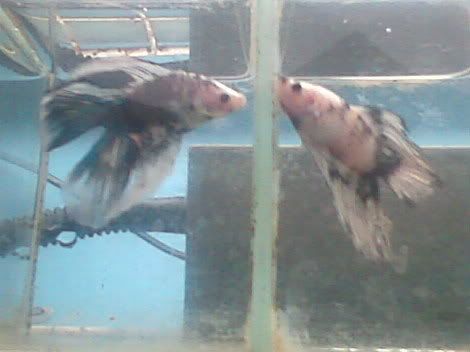
MELANO LINE
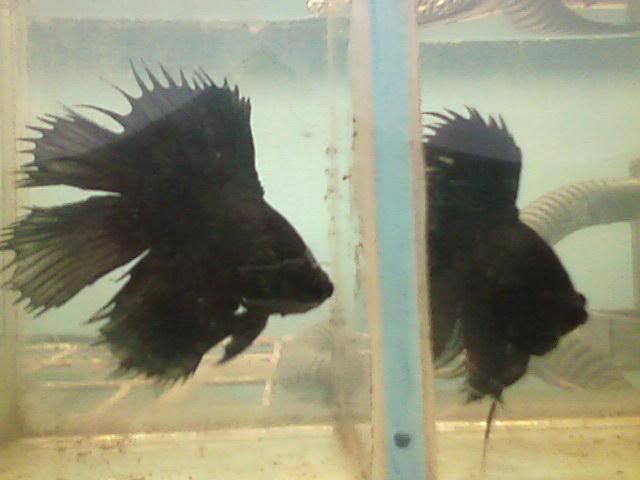
MELANO BUTTERFLY
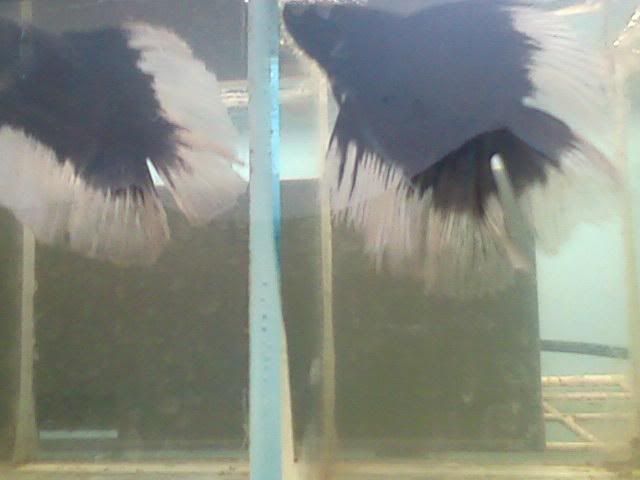
-
07-28-2008, 07:36 PM #367
HALFMOON
SUPER RED
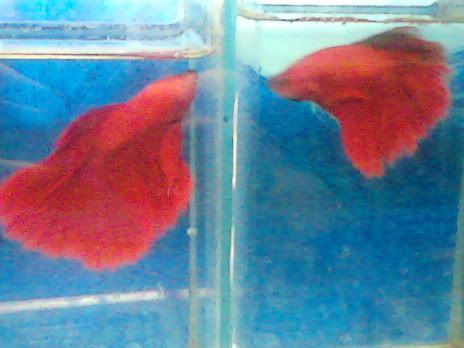
RED BUTTERFLY
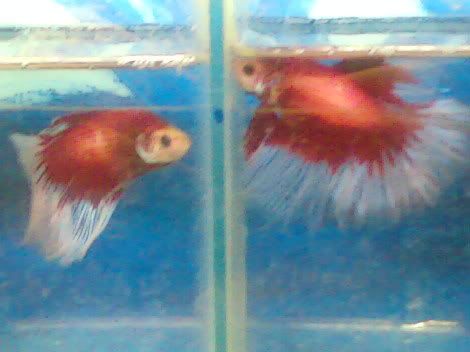
CAMBO RED
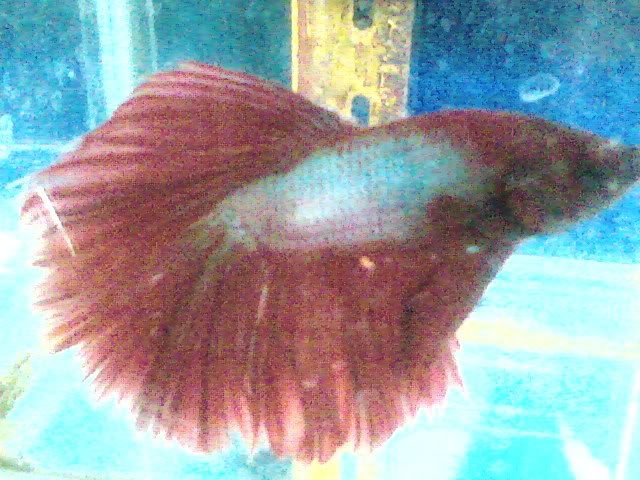
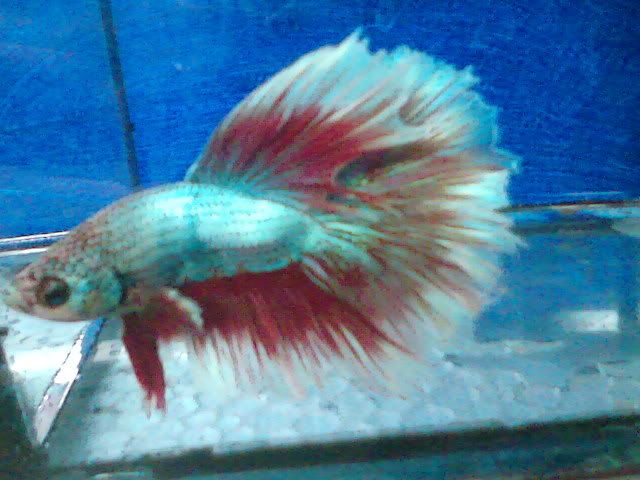
PLATINUM WHITE
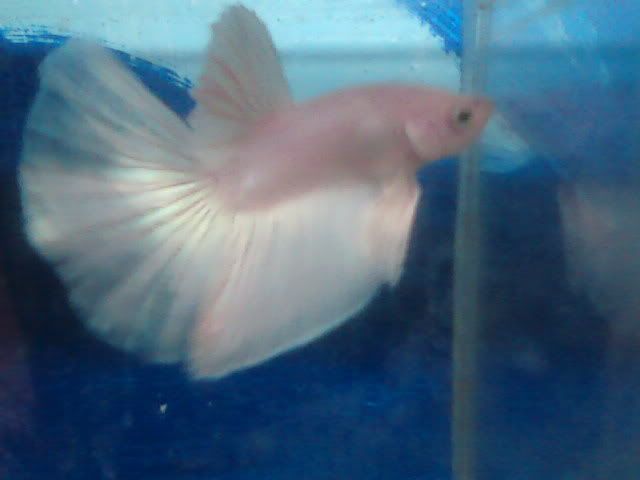
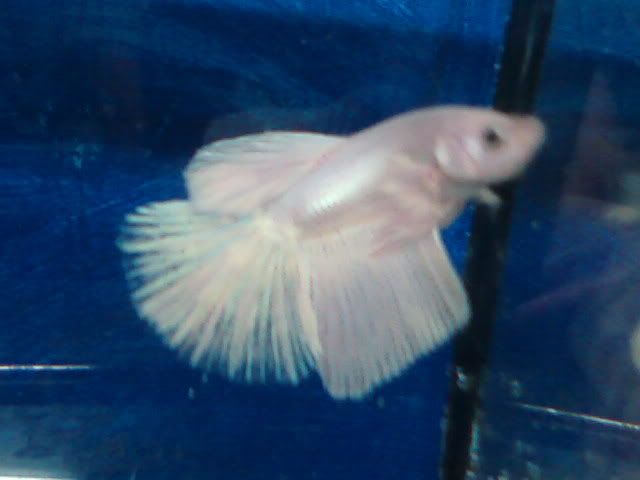
NEW STRAIN
KOI MARBLE BETTA vt
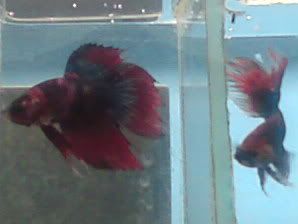
-
07-28-2008, 07:44 PM #368
Bai ok nato Dragons

Pics unya bai ha para mka pili ta...
-
07-28-2008, 08:04 PM #369
how much do the platinums cost? kanang shiny ug scales. just asking.
-
07-29-2008, 02:15 AM #370Newbie

- Join Date
- May 2008
- Posts
- 15
Advertisement
Similar Threads |
|




 Reply With Quote
Reply With Quote


